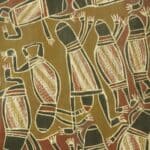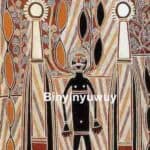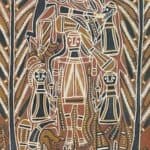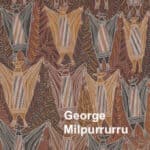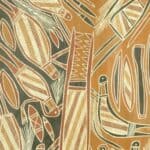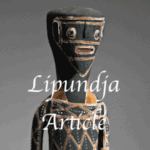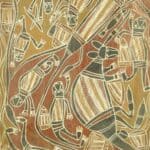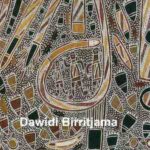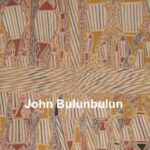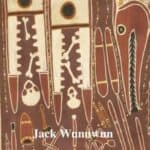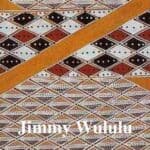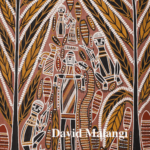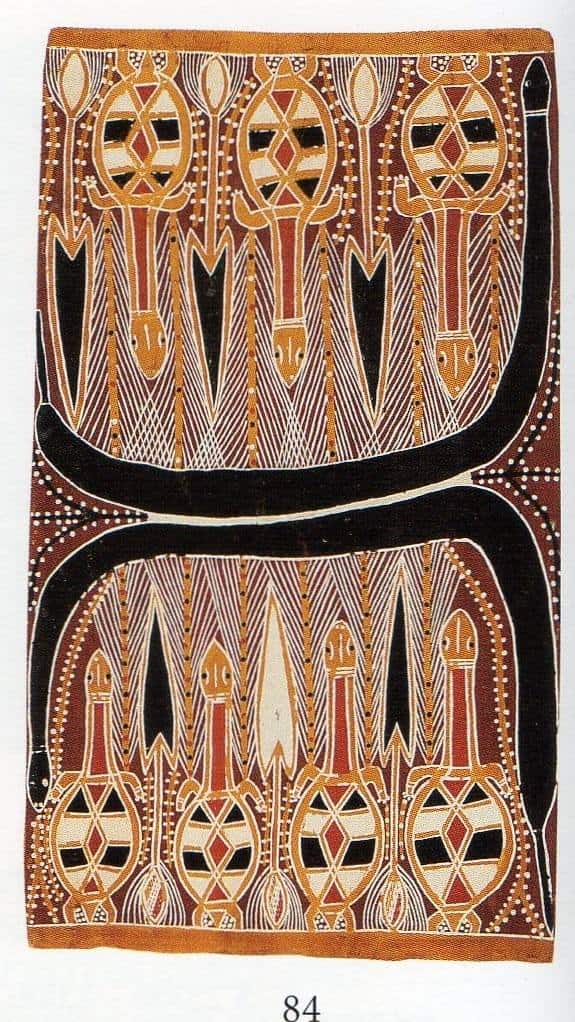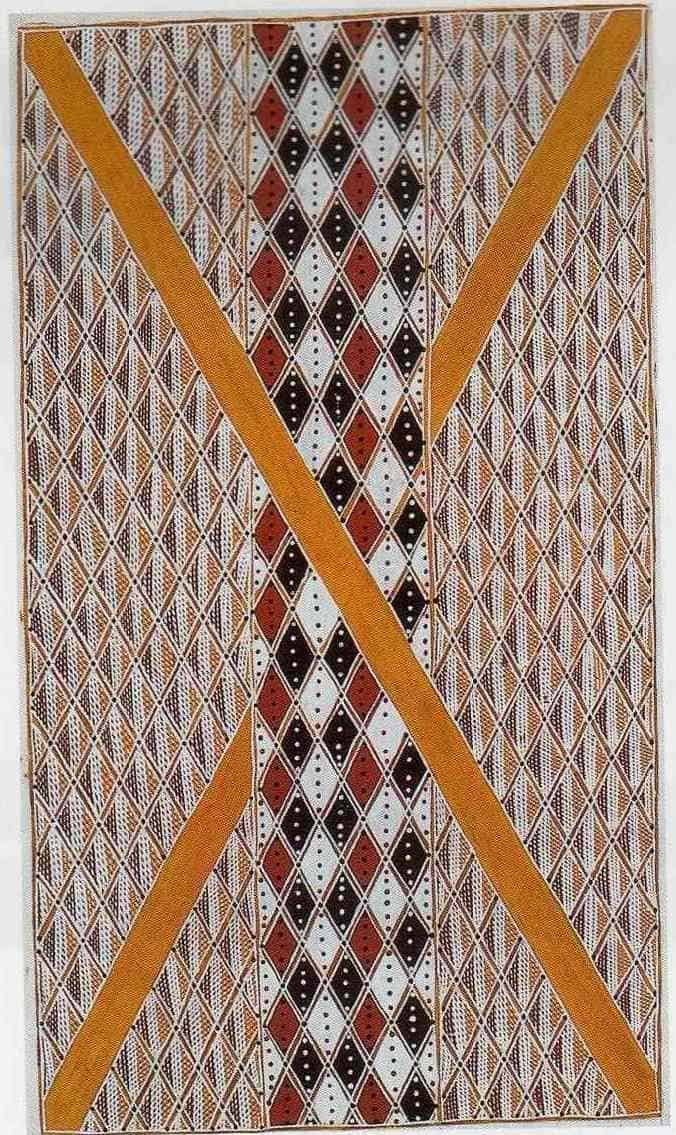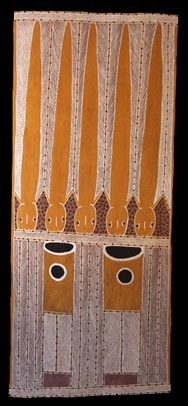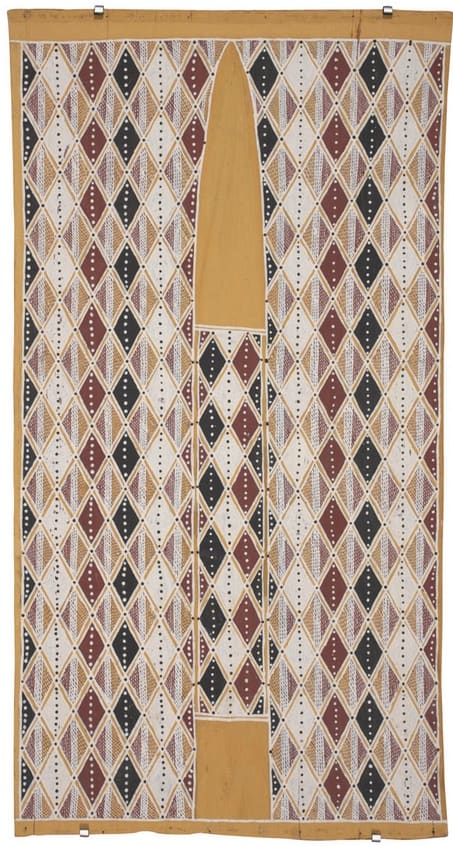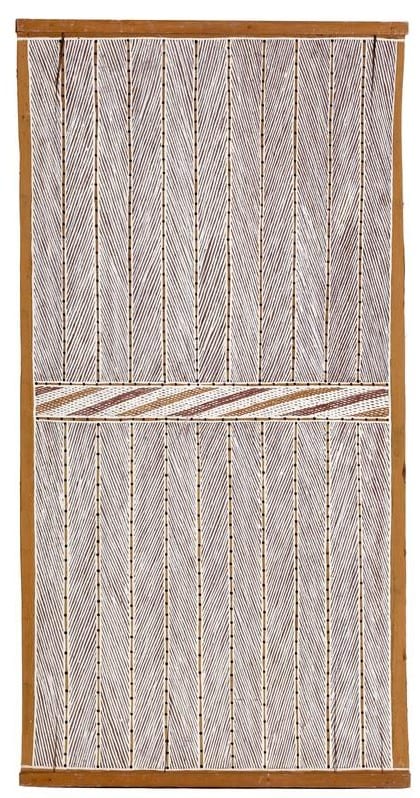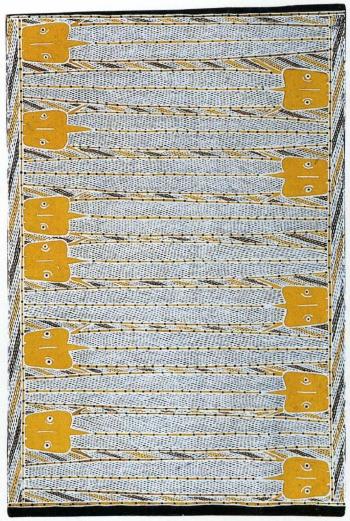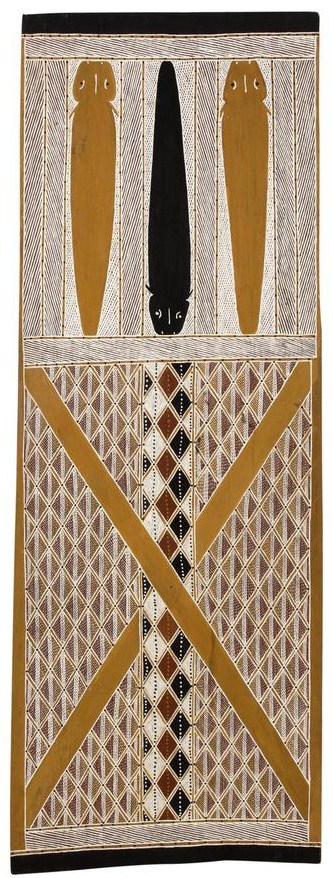Jimmy Wululu Aboriginal Art
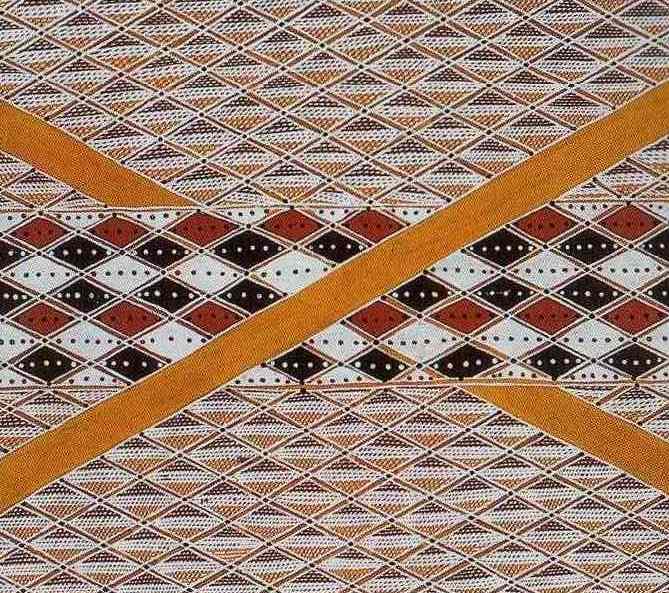
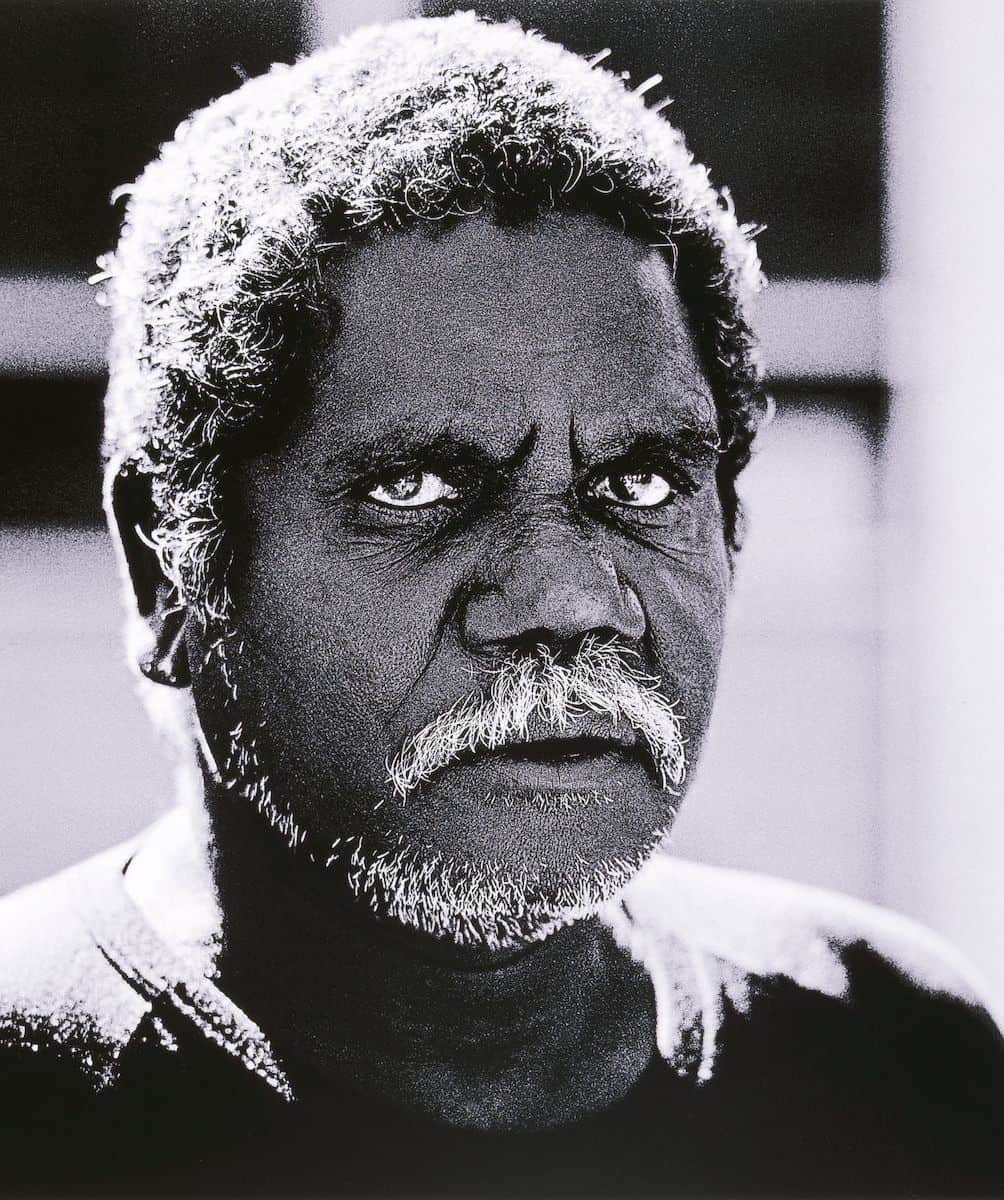
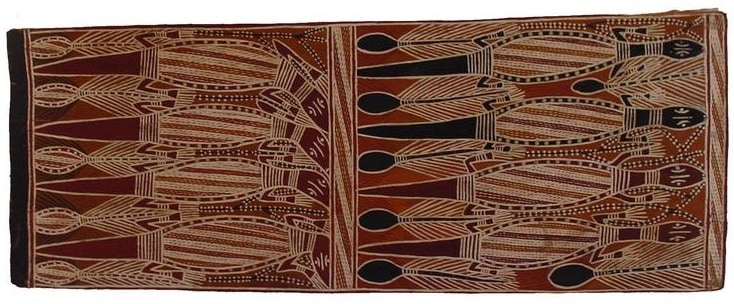
Biography of Jimmy Wululu
Aboriginal artist Jimmy Wululu was born around 1936 at Mangbirri, a coastal settlement in Central Arnhem Land. His country is Djiliwirri, and he spoke Gupapuyngu.
Jimmy Wululu went to school at the mission on Milingimbi Island in Arnhem land. He belonged to the second generation to grow up on the mission.
At the start of the Second World War, a Wululu and some friends walked over 600 kilometers west across Arnhem Land to Darwin. The epic journey from Milingimbi to Darwin was one of the key events of his life. In Darwin, Wululu lived and worked with white Australia by day and in complex traditional ceremonial life at night. Despite being mission born and in Darwin Wululu, still went through full Aboriginal initiation into the culture. He would have been in contact with other Milingimbi artists like Malangi, Dawidi and Binyinyuwuy.
In the late 1950’s wululu went back to Milingimbi. He began work in the building industry, including work in an innovative scheme using ant-beds to make mud-brick houses
Wululu worked as both a painter and builder in the 1960’s and 1970’s, then took up fishing, taking out a commercial fishing license. Throughout this period he painted sporadically. In the 1980’s Jimmy changed his painting style. His senior status now allowed him to paint previously sacred and forbidden designs.
Later Life
In 1989 Wululu traveled to New York to attend the opening of the major exhibition ‘Dreamings. This was the year he also won the Rothman’s Foundation Award for the best painting in traditional media. In the 1990’s he was one of the artists to contribute several bone coffins, made from painted hollow logs to the ‘Aboriginal Memorial’. The aboriginal memorial installation comprises 200 burial poles. These poles symbolizing 200 years of white occupation of Australia. This bone coffin is a permanent display at the National Gallery of Australia in Canberra. In 1992, he was the recipient of an Artist Grant from the Aboriginal Art Unit of the Australia Council. Later in November, the same year Wululu laid out a traditional sand sculpture as part of a joint exhibition at the Canberra School of Art. In 1996 he also made another sand sculpture in the forecourt of the Northern Territory’s Legislative Assembly. Jimmy Wululu was also one of the artists who participated in a series of workshops held in Ramingining in 1997 by printmaker Theo Tremblay. He died in 2005.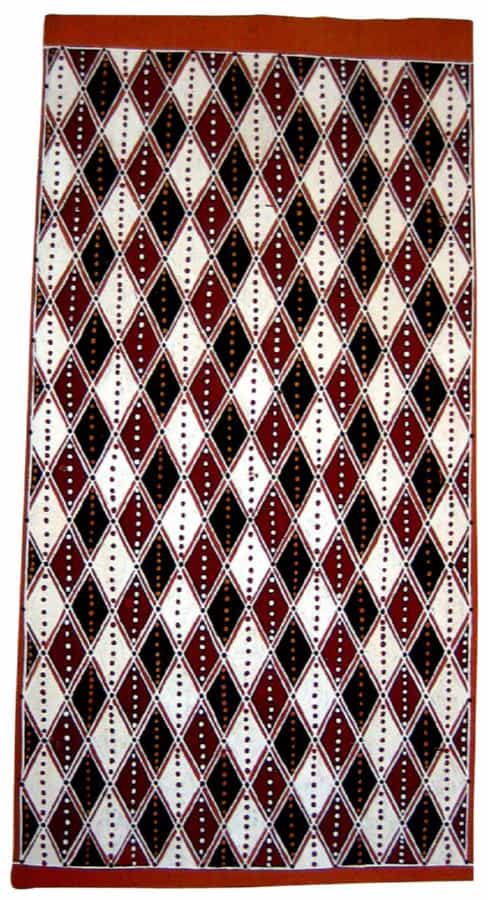
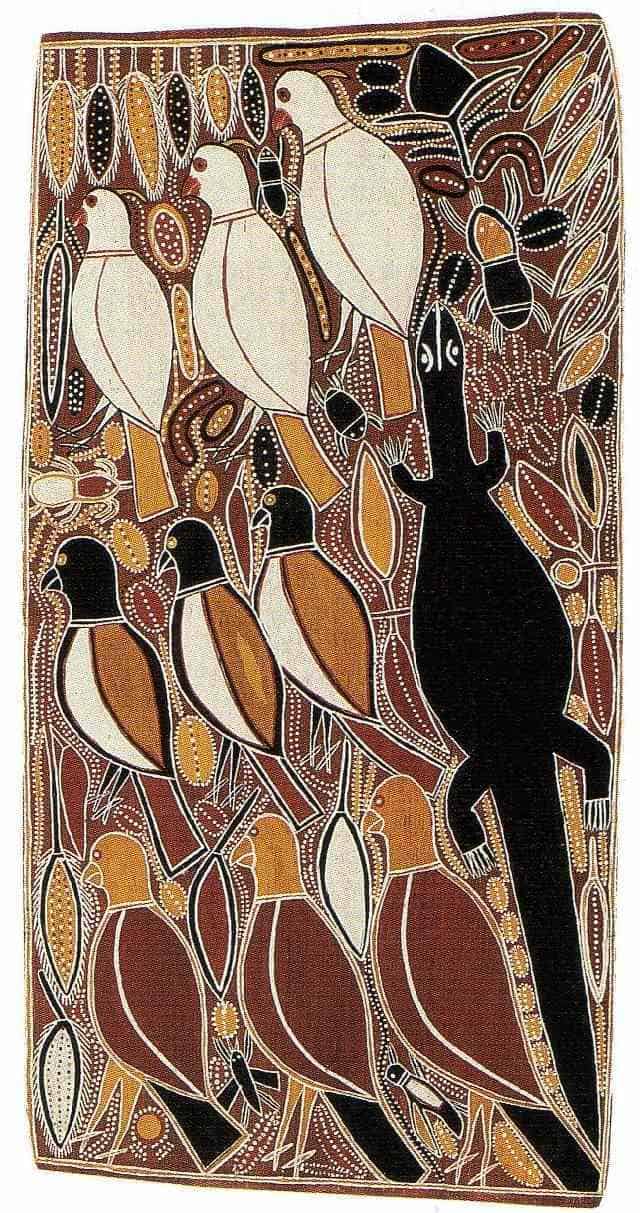
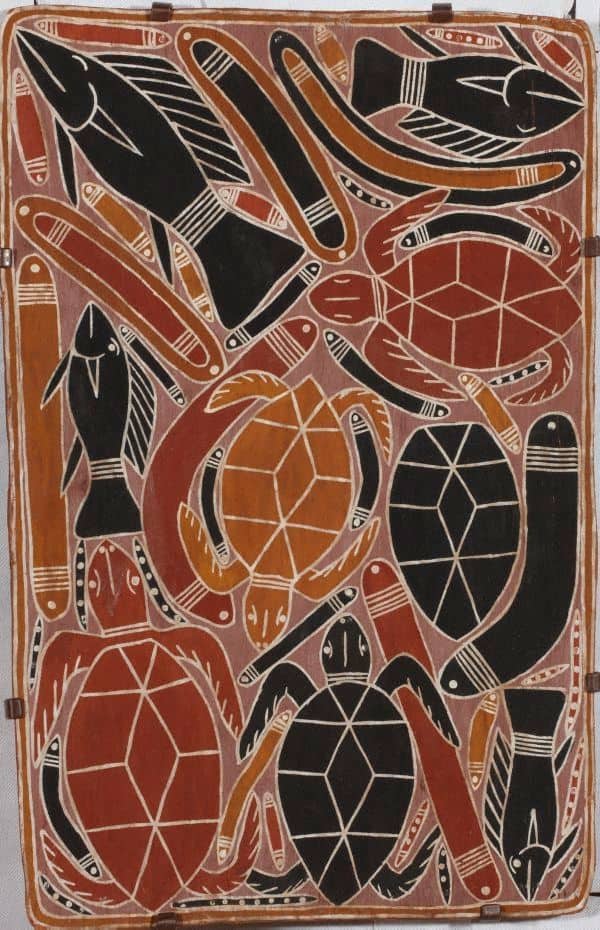
Early Style
Wuvulus traditional totems are Niwuda (honey), Djalumbu (hollow log), and Eel-Tailed Catfish. The honey men’s design is diamonds and a Djalumbu is a hollow log bone receptacle used for burial. One of these three totems is usually on jimmy’s artworks. He also paints Turtle Fish possum birds flying fox lizards and snakes. His early barks were naturalistic images of turtles and other animals. Like Millpurrurru and Bulunbulun a single totem animal was often repeated numerous times. He also painted depictions of the hollow log bone receptacles. These often have a distinctive black dot eye and other sacred objects. Due to their commercial success and more senior customary position, Jimmy stopped painting animals. He started focusing on painting sacred objects and the catfish totem often in a repetitive and symmetrical fashion.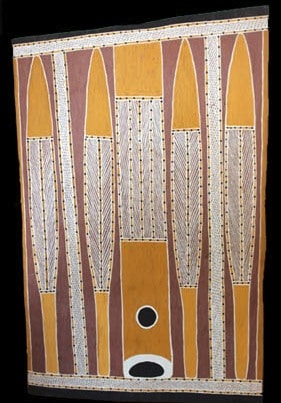
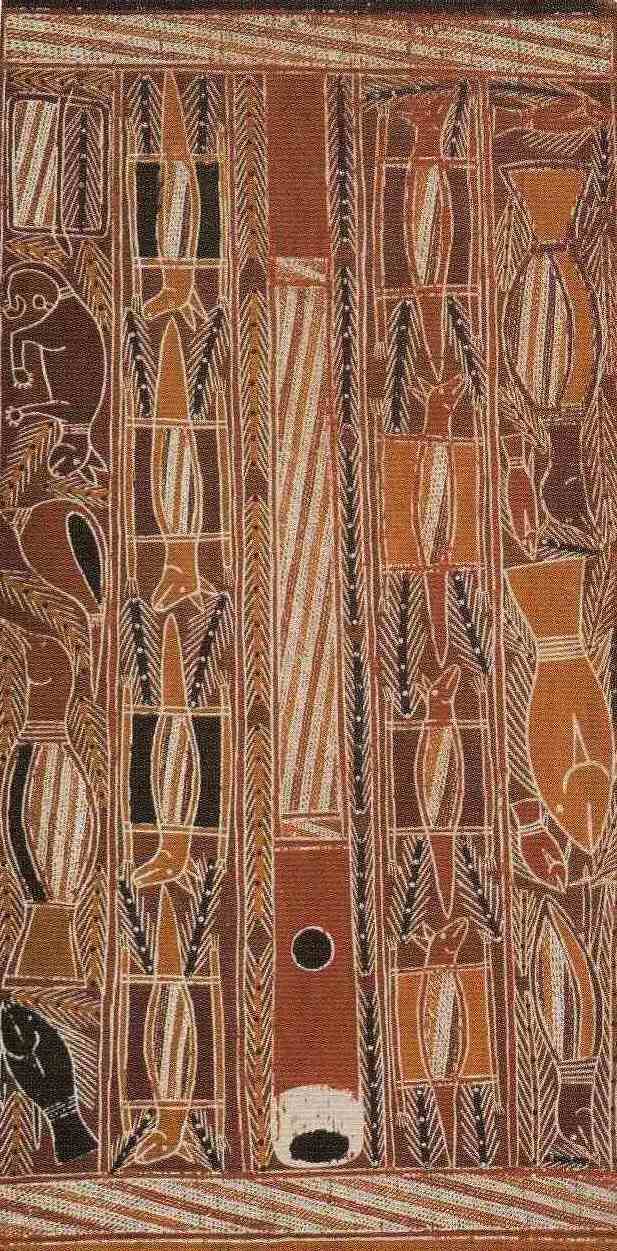
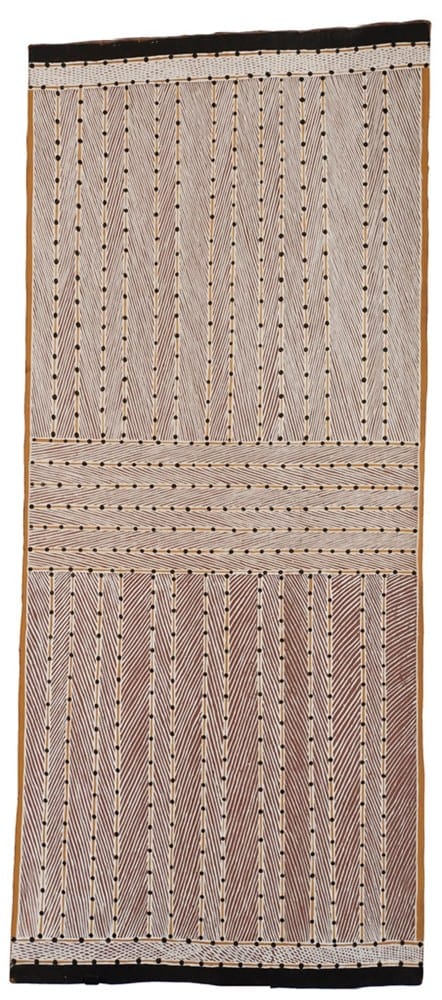
Later Works
In his later works, he drops the sacred objects and catfish totem and paints pure traditional design. These later minimalist body painting designs are what he is best known for. He used a combination of his drafting skills learned as a builder and his senior ritual status to produce a unique style. Many of these designs were originally secret and sacred and would only be seen painted initiates or on burial bone logs. Some other Aboriginal artists also started painting pure sacred design like John Mawurndjul The distinctive herringbone pattern used in many of Wululu’s work represents the bones of the Eel-Tailed Catfish. This traditional design painted on people and objects for ceremonies. It would also adorn common objects such as dilly bags and spear throwers to make them more powerful. The distinctive diamond shape similarly is the sacred design of the honey men totem. This design was also used on the body of initiatives and on sacred objects. Unlike other aboriginal artists Wululu’s experience in the building trade led to him drafting his images in pencil. He was also known to have used a ruler which accounts for the exactness of his later works.Other Aboriginal Art and Artists
All images in this article are for educational purposes only.
This site may contain copyrighted material the use of which was not specified by the copyright owner.
Jimmy Wululu artwork Images
The following images are of the Artworks of Wululu. It is not a complete list of his works. They do however give a good idea of the style and above all the variety of this Aboriginal Artist.


